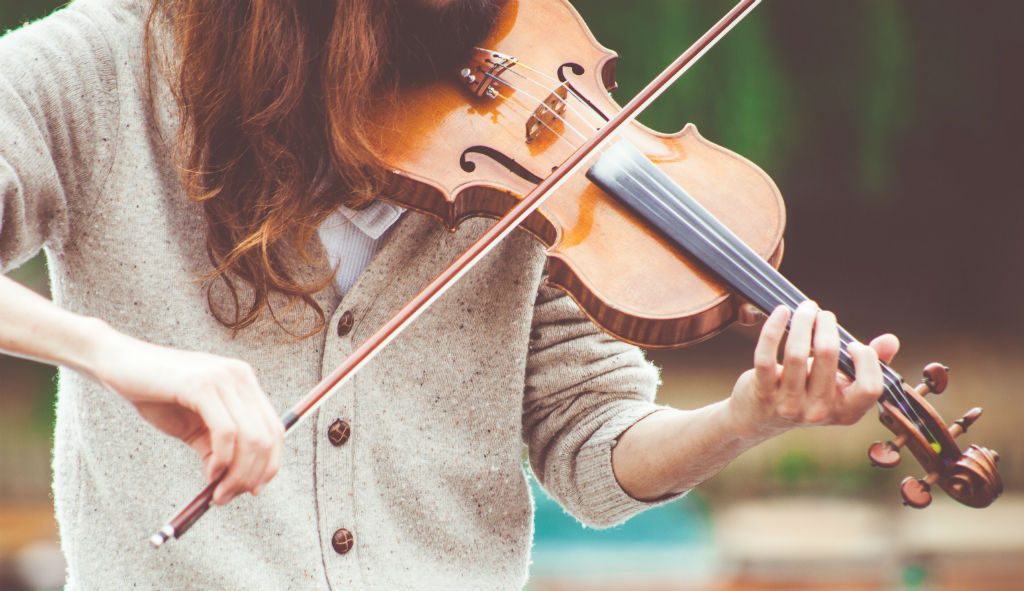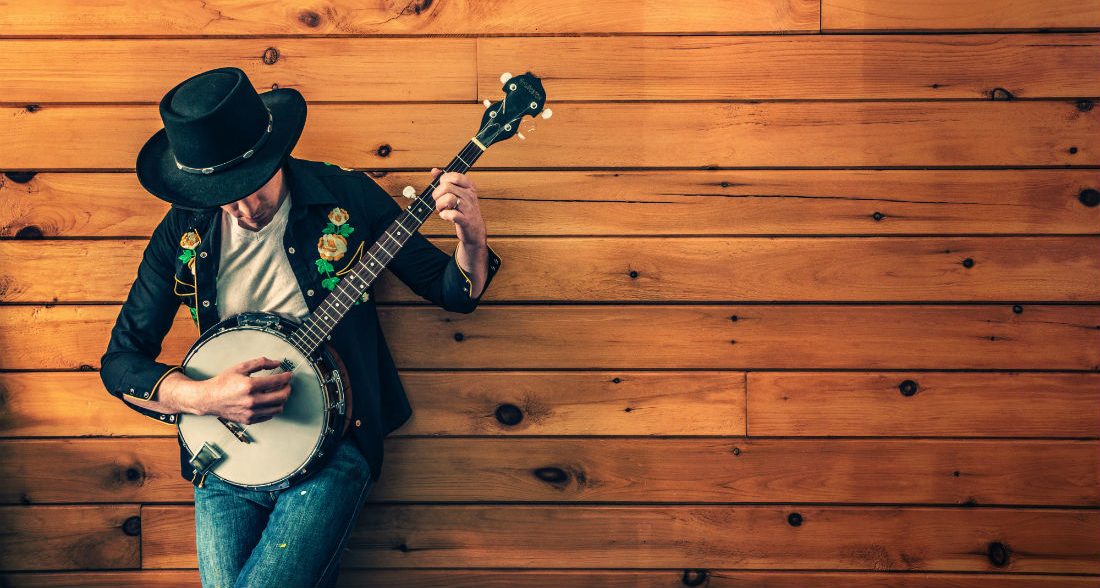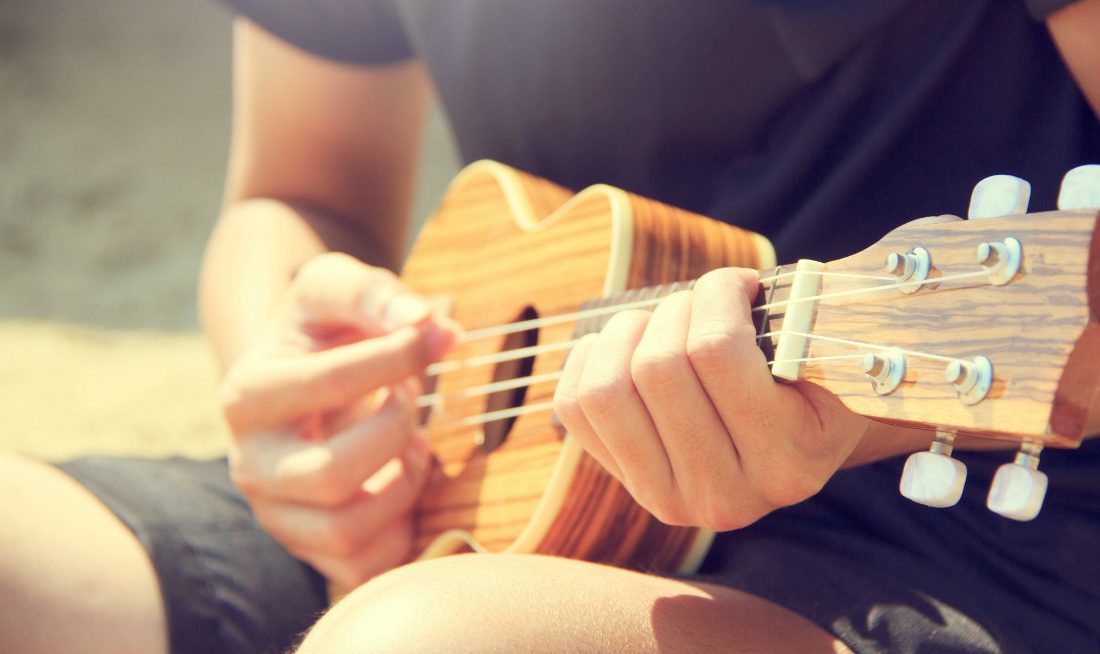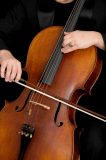
Picking up a new string instrument is an exciting experience. Whether you are choosing your first model, upgrading, or seeking the perfect option for your child, it’s always fun to browse through all the choices and decide what’s right for you. However, with so many varieties and the numerous tips you’ll hear along the way, the process gets confusing and can drag on for a while. To help you out in your undertaking, here’s a detailed guide on the different types of instruments and accessories available, along with some advice on what’s important to consider when you start looking for your next stringed instrument.
The Various Instruments
Violin Family
The violin family is many centuries old and represents one of the most popular types of instruments. It includes the violin, viola, cello, and double bass. The violin is the highest pitched variety and has a great deal of prestige attached to its legacy. With legendary and unique models fetching several million dollars at auctions, we sometimes have the idea that you need to spend an enormous amount of money to get started, which isn’t the case at all with the products available today.
The viola is a larger version of the violin, with a deeper, lower range. Although it is featured in various classic pieces as a solo instrument, its main role is usually to perform accompaniment parts, interpreting the middle voices of different arrangements. This might not be the most obvious choice, but all kinds of orchestras and chamber ensembles require viola, and this could lead to more playing opportunities with other musicians, which, after all, is what music is all about. Players currently practising the violin can benefit from picking up a viola to solidify their technique and control since it has a wider fingerboard to exercise those fingers.
The cello has a much lower voice than the previous instruments, and it has notoriety thanks to films such as The Soloist and The Living Daylights. Lots of pieces are written for the cello as a solo instrument, such as Bach’s famous Cello Suites. It is also played anchored on the floor and not between the chin and shoulder as are the violin and viola.
Finally, the double bass is the lowest and largest instrument of the orchestra and is used in various styles of music. Compared to the other instruments in the family, playing pizzicato (plucking the strings) instead of wielding a bow is very common and presents many different tonal possibilities. Although used as an accompanying instrument, numerous jazz artists have developed improvisation and solo skills to express themselves in melodic ways.
More String family members
The ukulele is a very popular Hawaiian guitar-like instrument. With only 4 easy-to-play nylon strings, it’s a great way to get kids into music. Commonly used to accompany singers, it’s also very present in pop songs. They come in various sizes, such as soprano, concert, and tenor, but are tuned the same way in many cases. These differences accommodate various techniques, styles, and tonal preferences, enabling players to experiment to find their ideal sound.
 The banjo was originally adapted from similar African instruments. A thin membrane (it resembles a drum skin) is stretched out over a round frame to resonate under the different strings being plucked or strummed. Various picking techniques permit a vast array of tones, and this makes the instrument shine in many different styles of music. The banjo also exists in a few different string combinations—mainly 4 and 5 strings. A 6-string version is available as well, which is played and tuned just like a guitar, enabling guitarists to use their fretboard knowledge and technique to achieve the banjo sound without having to learn a completely different instrument.
The banjo was originally adapted from similar African instruments. A thin membrane (it resembles a drum skin) is stretched out over a round frame to resonate under the different strings being plucked or strummed. Various picking techniques permit a vast array of tones, and this makes the instrument shine in many different styles of music. The banjo also exists in a few different string combinations—mainly 4 and 5 strings. A 6-string version is available as well, which is played and tuned just like a guitar, enabling guitarists to use their fretboard knowledge and technique to achieve the banjo sound without having to learn a completely different instrument.
Music Styles
If you’re just starting out or picking an instrument for your child, a good question to ask yourself is what kind of music styles you enjoy. If you choose an instrument that is predominantly featured in that genre, you’ll find it easier to be constantly motivated and inspired. You will basically have more fun. When it comes to kids and teenagers, it’s an excellent way to keep them playing and not abandoning the pursuit.
 Although most of these instruments are involved one way or the other in popular music, the only one that covers many pop styles is the ukulele. With various artists using the ukelele for their compositions these days, you won’t run out of pieces to play. Also, it’s possible to play chords and accompaniments, so it’s a great tool to entertain guests, sing along with friends, and even write your own material!
Although most of these instruments are involved one way or the other in popular music, the only one that covers many pop styles is the ukulele. With various artists using the ukelele for their compositions these days, you won’t run out of pieces to play. Also, it’s possible to play chords and accompaniments, so it’s a great tool to entertain guests, sing along with friends, and even write your own material!
For fans of country and bluegrass (there’s more than you think!), the banjo is the way to go. With many different manners of playing and a vast culture to explore, it represents countless hours of fun and enjoyment. It is also gathering a lot of steam in the Indie scene, with bands such as Mumford & Sons and The Decemberists picking up the banjo to add layers of personality to their tracks. The violin is also regularly present in country music, and provides a big melodic element to the songs, as well as being featured in many solo spots.
If you enjoy jazz and want to perform it on a stringed instrument, the double bass is what you’ll find on the vast majority of jazz records. The style consists of rhythmic and bass accompaniment, which seems very unassuming, but also very deep and challenging. Jazz bassists also take leads and improvise solos, so the number of possibilities is endless. Any self-respecting jazz ensemble has a double bass player, so it’s a very good entry point for playing with other musicians.
A boundless amount of classical music has been written for the violin, viola, cello, and double bass. If that is what you fancy, or you simply want to begin at a very popular starting place, you’ll quickly find that there’s no shortage of teachers, material, and resources. The violin and cello, in particular, have many solo pieces, so if you’re somewhat of a lone wolf, they are both great choices to consider. Eventually, playing in a chamber ensemble or an orchestra is a very satisfying experience on many fronts; musically, culturally, and socially. I highly recommend it!
Numerous other styles of music exist obviously, but this family of instruments doesn’t commonly appear in them. For example, if you are really into rock, you might be a bit disappointed with the amount of material available. However, the sky’s the limit in music, and you might see this as an opportunity to develop and create a completely different genre, just like many influential musicians before you.
How to Pick
 Picking an instrument really depends on what you are looking for. This is why I’ll break it up in a few sections to better describe the best course of action. While the Internet is full of great advice on many subjects, I wouldn’t rely on one’s opinion about a particular instrument. When you take into account your personal background (which is possibly completely different from someone else’s), your own anatomy, and preferences, chances are that what works for someone else might not be the most effective choice for you. Your teacher is probably a better reference to help you out since he or she knows you personally, and you can talk face to face.
Picking an instrument really depends on what you are looking for. This is why I’ll break it up in a few sections to better describe the best course of action. While the Internet is full of great advice on many subjects, I wouldn’t rely on one’s opinion about a particular instrument. When you take into account your personal background (which is possibly completely different from someone else’s), your own anatomy, and preferences, chances are that what works for someone else might not be the most effective choice for you. Your teacher is probably a better reference to help you out since he or she knows you personally, and you can talk face to face.
Your First Instrument
If you are shopping for yourself, once you’ve decided which instrument you want to play, I recommend not going for the cheapest instrument, but also not the most expensive one. A lot of the time, the affordable choices gloss over the most important details to lower the price, and you’ll have a hard instrument to tune and to keep in order. That will really put a dent in your motivation, and can even become a hurdle. When it comes to the violin family, companies like Yamaha craft very solid instruments at the entry-level. For ukulele, Kala produces better than average basic level models and are good to consider. Banjos are usually a bit more expensive (even at the entry grade) since they have many different parts to them. Goldtone makes great products and is worth investigating.
Buying Your Child an Instrument
What I wrote above applies to instruments for kids, but it’s important to note that there are some smaller models to accommodate their shorter limbs. For example, the violin goes down to 1/16th of the measurement of a standard one. This includes a smaller bow, and most student models come as a set. Around age 10 or so, it’s usually time to start using a full 4/4 size. Although a teacher is the best person to ask which proportion will fit your child, here’s a table that will give you an idea which size to pick depending on the length of the distance between the neck and the wrist.

Upgrading from Your First Instrument
If you find yourself wanting to upgrade from an entry-level instrument, make sure to consult with someone who has experience. They can help you figure out the weak points in what you have so you can pick a model that addresses those issues. These include tuning, playability, tone, and features. Improvements in wood selections really fix these problems and make for an instrument with better tone.
Accessories
Some accessories are required for the violin family. For example, rosin is needed to increase friction between the bow’s hairs and the strings themselves to make the instrument audible. Shoulder and chin rests are also necessary but are usually included in violin packages. Cellos and double bass need endpins and endpin stoppers to set on the ground to keep them from slipping while playing.
For all stringed instruments, a tuner is very useful to make sure that the open strings are in tune and that note positions are well learned and internalized. Some handy accessories include humidifiers (especially beneficial for us in Canada with our long winters that make for very dry interiors) and stands. Extra strings are always good to have on hand in case one breaks.
While I recommend a good hard-shell case for all instruments, it can be bulky and somewhat annoying to carry (notably for all of you double bass warriors). Softshell bags come in different thicknesses and durability so I would advise you to check them out in person and pick the most robust case you can afford. Also, while transporting your instruments, make sure you pay attention to where they are. For example, if it’s a really warm day, it is quite unwise to leave a precious violin in the trunk where it will get very hot and the temperature there might affect the instrument’s integrity.
Sheet Music
Sheet music is a great way to supplement private lessons. With so many options, they become an excellent learning tool and make for original gift ideas. It’s really enjoyable to purchase relatively inexpensive sheet music periodically to learn new material and have some fun. Simplified versions of popular and classical tunes exist to accommodate beginners and are usually very convincing renditions of songs we know and love. Instructional methods and videos are very valuable, presenting new approaches to possible difficulties we encounter on our path of learning.
Choosing an instrument is a fun experience and is just a small step into the immense world of music. Hopefully, this guide addresses most of the questions you might have, but if you still have any uncertainty, feel free to leave your questions and messages in the comment section below!
Check out all the stringed instruments and accessories at Best Buy.




I’ve been thinking of upgrading from my first bass guitar for a few years. There are a few new basses that I’ve been dreaming about.
Pedals are another accessory people can purchase to get additional functionality out of their current instrument. The iRig is a device that can work with an app on your phone to mimic the functions of a pedal.
Comments are closed.